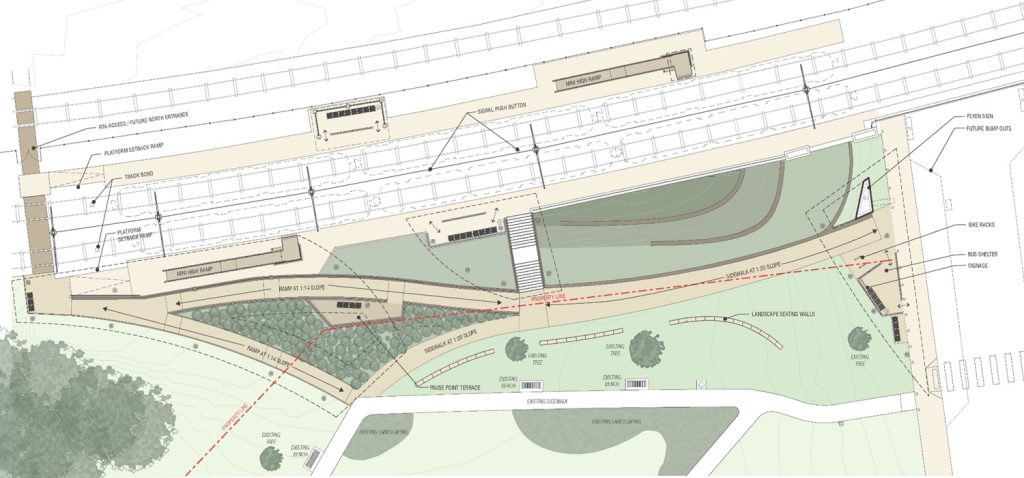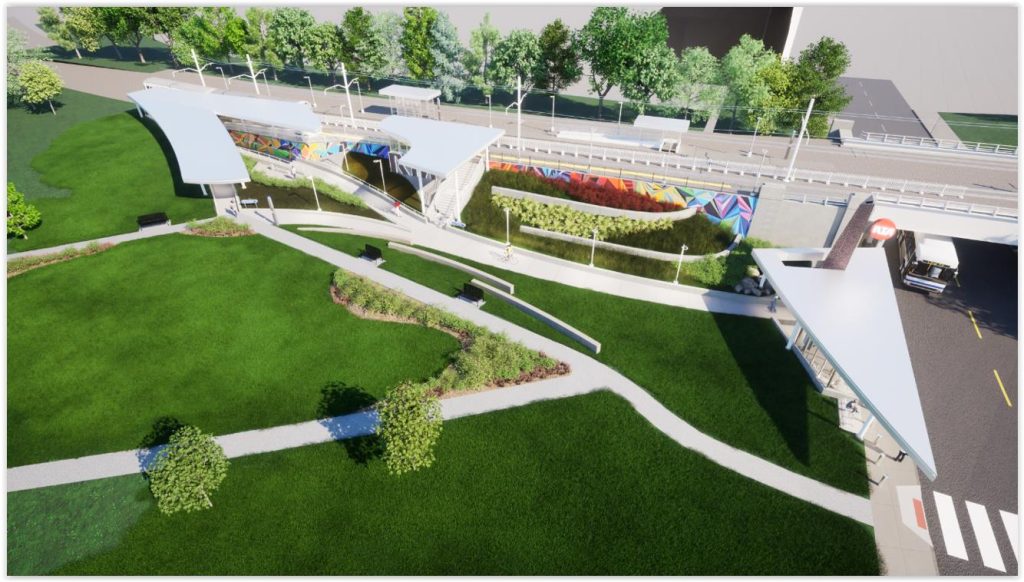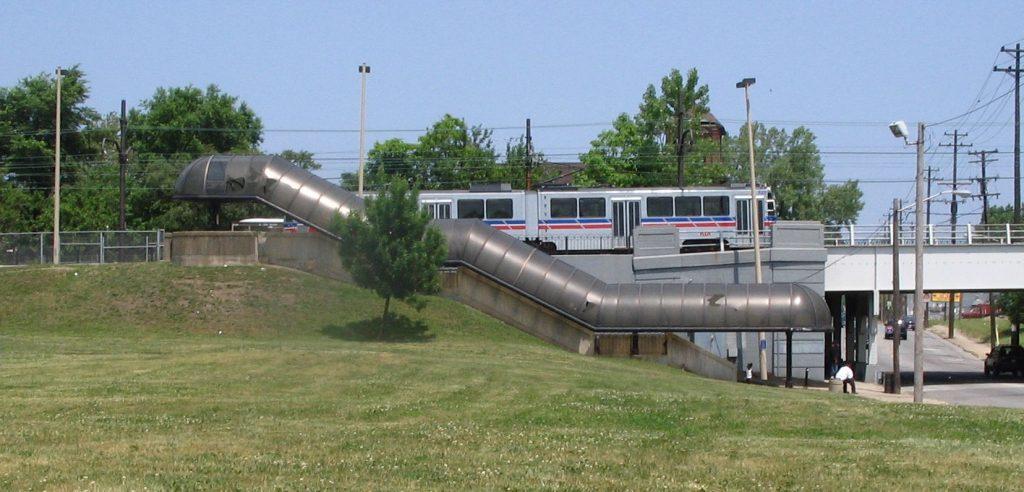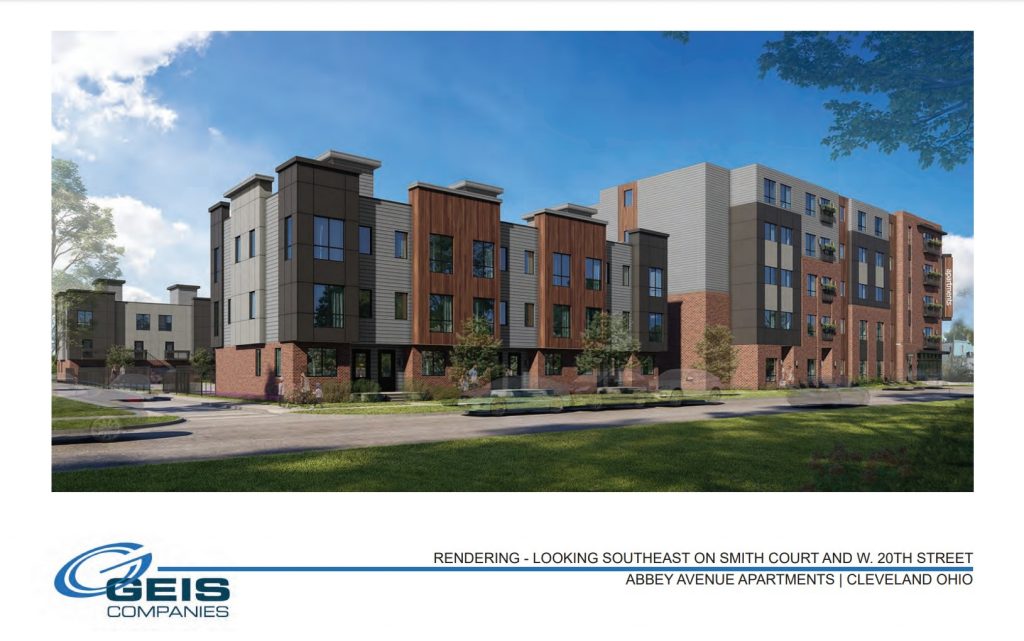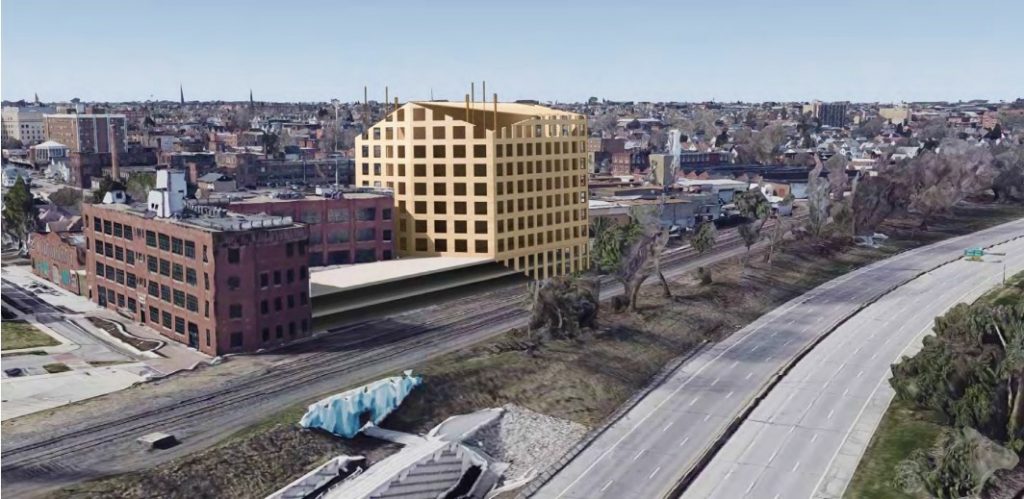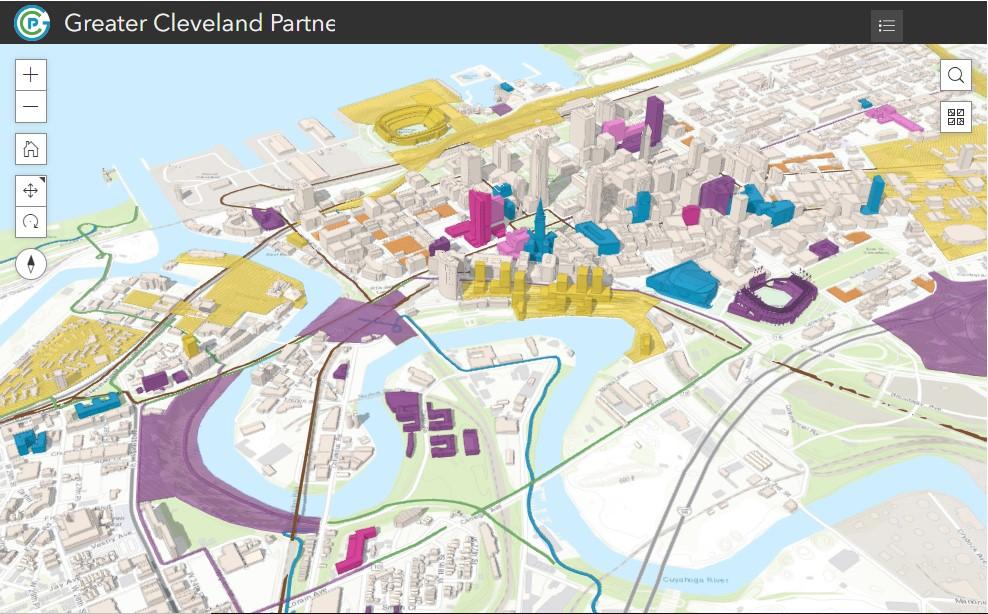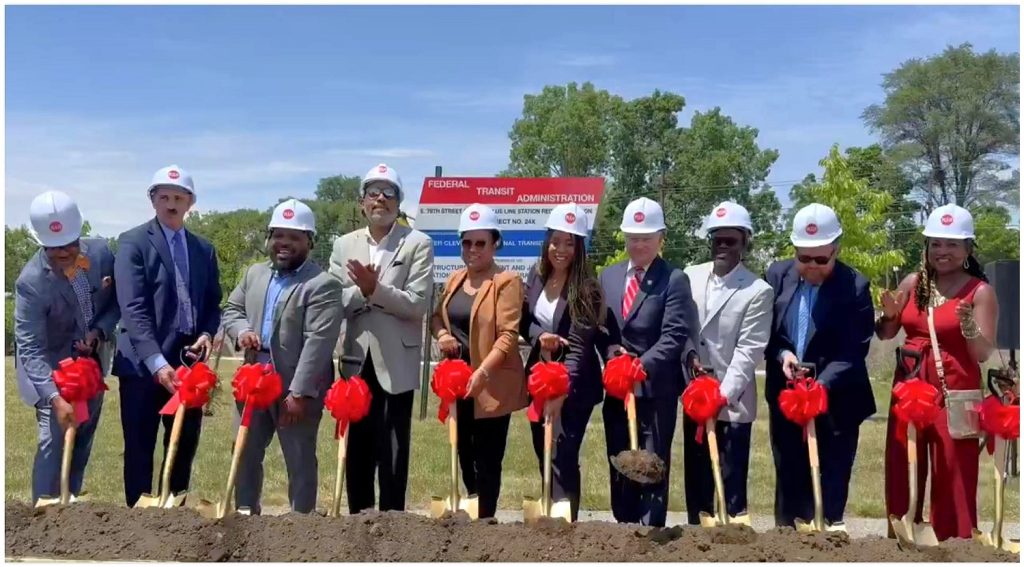
Local, state and federal dignitaries braved the hot sun to flip some dirt at the start of the replacement of the East 79th Street Blue/Green Line station. The station is closed during the 14-month-long, $10 million reconstruction project that is intended to boost and benefit from the redevelopment of job-producing sites along the Opportunity Corridor (Rep. Shontel Brown). CLICK IMAGES TO ENLARGE THEM.
New jobs, housing to boost station’s ridership
Sometimes a piece of underutilized infrastructure can be revived to be a part of not only its own rebirth, but that of its surrounding area. And in return, that rebirth helps to justify the existence of the infrastructure in the first place. In this case, the infrastructure is the East 79th Street Blue/Green Line station that was considered for closure a decade ago.
At only 145 boardings per day in the mid-2010s, the East 79th station light-rail station ranked 30th among the Greater Cleveland Regional Transit Authority’s (GCRTA) 44 rail stations — not including the five on the Waterfront Line extension of the Blue and Green lines from Shaker Heights.
It is not to be confused with the East 79th Red Line station that was rebuilt in 2021.
Both stations sat in a former neighborhood, much of it now gone, amid the ruins of hulking, century-old factories poking out from trees on an urban prairie. It’s a place that was called the Forgotten Triangle, bounded by a triangle of Kinsman Road, Woodland Avenue and Woodhill Road.
The area surrounding the station was home to the U.S. Rubber Co. (later Uniroyal), Eberhard Manufacturing Co., Peerless Motor Car Corp. and Pennsylvania Railroad’s busy Kinsman Yards — all now gone.
But not everyone’s gone. Some never left. Miceli Dairy Products, Orlando Baking and Federal Equipment companies not only stayed but are expanding and adding new jobs. There are also new homes and apartments in the triangle and a major new NOR-AM Cold Storage warehouse on East 75th Street.
And there’s the $330 million Opportunity Corridor Boulevard that was jammed with traffic from day one back in Nov. 12, 2021. Its construction directly leveled or encouraged the leveling of many industrial ruins. The Kinsman Neighborhood’s Forgotten Triangle is forgotten no more.
Yesterday, another step forward for the neighborhood was taken when local, state and federal dignitaries used gold-painted shovels to break ground for GCRTA’s $10 million rebuild of the East 79th Street Blue/Green Line station.
The old station, elevated above the street, dates from 1920 but was last rebuilt in 1981. Its stairs up to track level were not ADA-compliant even if they weren’t buckled and broken like the glass-shattered canopy above it. The station was closed in June for the rebuilding project.
Over the next 14 months, the station will be reconstructed with new ramps up to track level, new trackside platforms, public art, and sheltered waiting areas.
One of those shelters will be heated. It will be located at a bus boarding area next to East 79th, route of the hourly, weekdays-only No. 2 bus linking Steelyard Commons with the St. Clair-Superior neighborhood.
Funding for the project came from an $8 million federal grant via the All Stations Accessibility Program (ASAP) leveraged by $2 million from GCRTA. The general contractor is R.L. Hill/Platform Contracting Joint Venture, comprised of R.L. Hill Management, Inc. of Solon and Platform Cement Inc. of Mentor.
“This is another win for Northeast Ohio thanks to the Bipartisan Infrastructure Law, which has made the $8 million dollar grant backing this project possible,” said U.S. Rep. Shontel Brown (D-11 of Warrensville Heights) in an e-mail to NEOtrans.
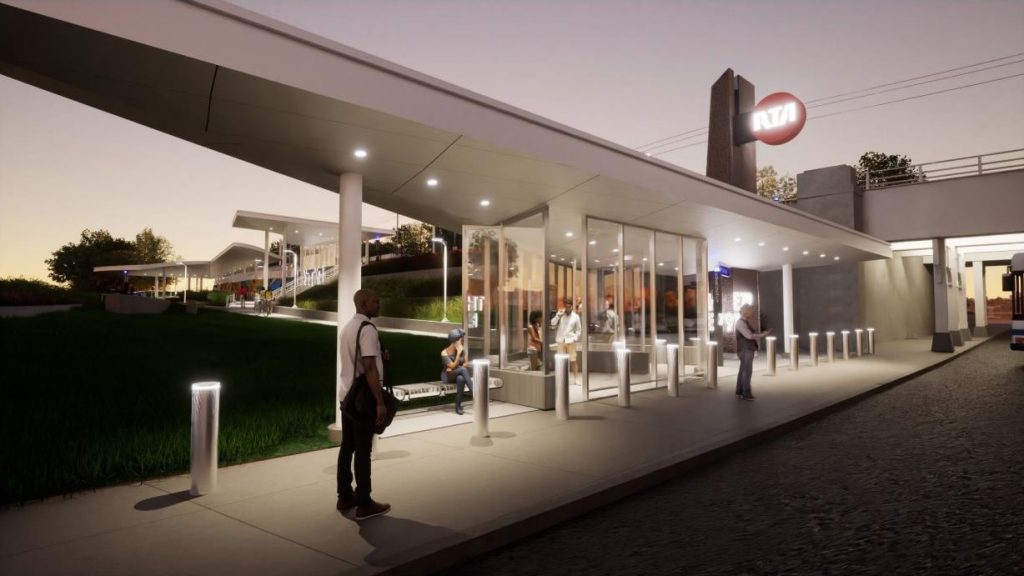
This streetside bus transfer waiting area will be heated for 15 minutes with the press of a button. Some at GCRTA were concerned that this would cause people to camp out there but staff said it will be monitored and, if proven successful, could be expanded to more locations in the transit system (Bowen).
“Renovating, repairing and rebuilding this station is about making an investment in the city and in the East Side — so this is an occasion worth celebrating,” Brown added. “The renovation will make the East 79th Street Station safer, more accessible, and more attractive — improving the life of people in the neighborhood and encouraging more development.”
Designs for the station rebuild include a walkway from the trackside platforms extending to the north toward a future development planned by Burten Bell Carr Development Inc. (BBC), a nonprofit community development corporation.
The concept includes mixed-use in a pedestrian-oriented setting that could involve the renovation of the decayed, 122-year-old First Hungarian Reformed Church, aka Second New Hope Baptist Church, 2850 E. 79th.
BBC recently secured city landmark status for the stone-built church. South of the station, BBC is also expanding Hillside Park.
“This investment identifies the essential role of transit in keeping our communities and economy advancing forward as we continue building a workforce-ready greater Cleveland area,” said GCRTA General Manager and Chief Executive Officer India L. Birdsong Terry.
Miceli Dairy plans to double its employment in the coming years with a $128 million, multi-phase expansion. Rid-All Green Partnership’s campus continues to grow just one block east of the station. The city and the Site Readiness Fund for Good Jobs have something big brewing along the Opportunity Corridor, but mum’s the word for now.
While the urban fringe has lots of clean land for industrial development, it lacks easy access by workers. Conversely, urban Cleveland has lots of potential workers but lacks large parcels of clean land ready for potential employers.
Assembling, clearing and cleaning up sites near rebuilt, accessible transit stations like this one will be a key to Cleveland’s future, said local, state and federal officials at yesterday’s station groundbreaking ceremony.
END

